Intro
Recognize the signs of anxiety disorder with these 5 simple steps. Learn to identify symptoms of anxiety, such as excessive worry, fear, and panic attacks, and understand the differences between normal anxiety and anxiety disorders. Discover how to assess your mental health and take the first steps towards seeking help and finding relief.
Anxiety disorders are a common mental health condition that affects millions of people worldwide. Despite its prevalence, anxiety disorders often go undiagnosed or misdiagnosed, leading to unnecessary suffering and reduced quality of life. Recognizing the symptoms of anxiety disorders is crucial for seeking proper treatment and regaining control over one's life. In this article, we will outline five simple steps to identify anxiety disorder symptoms and take the first step towards recovery.
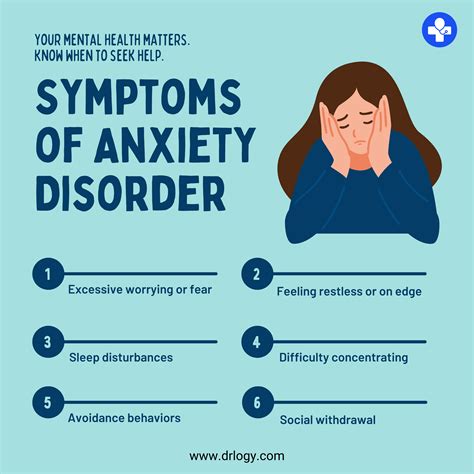
Anxiety disorders can manifest differently in different people, and it's essential to understand that everyone experiences anxiety differently. Some common symptoms of anxiety disorders include excessive worry, fear, or anxiety that is persistent and interferes with daily life. Anxiety can also manifest physically, such as with rapid heartbeat, trembling, or shortness of breath.
Step 1: Identify Physical Symptoms
Physical symptoms of anxiety can be subtle, but they can also be intense and debilitating. Some common physical symptoms of anxiety disorders include:
- Rapid heartbeat or palpitations
- Sweating, trembling, or shaking
- Shortness of breath or difficulty breathing
- Nausea or abdominal discomfort
- Headaches or migraines
- Fatigue or insomnia

If you're experiencing any of these physical symptoms, it's essential to consult with a healthcare professional to rule out any underlying medical conditions. However, if your symptoms persist or worsen, it may be indicative of an anxiety disorder.
Common Physical Symptoms in Specific Anxiety Disorders
Different anxiety disorders can manifest with unique physical symptoms. For example:
- Panic disorder: rapid heartbeat, sweating, trembling, or shortness of breath
- Social anxiety disorder: blushing, sweating, or trembling in social situations
- Post-traumatic stress disorder (PTSD): hypervigilance, exaggerated startle response, or difficulty sleeping
Step 2: Recognize Emotional Symptoms
Emotional symptoms of anxiety can be just as debilitating as physical symptoms. Some common emotional symptoms of anxiety disorders include:
- Excessive worry or fear that is persistent and interferes with daily life
- Restlessness, irritability, or mood swings
- Difficulty concentrating or making decisions
- Feeling on edge or constantly "on guard"
- Avoiding certain situations or activities due to fear or anxiety
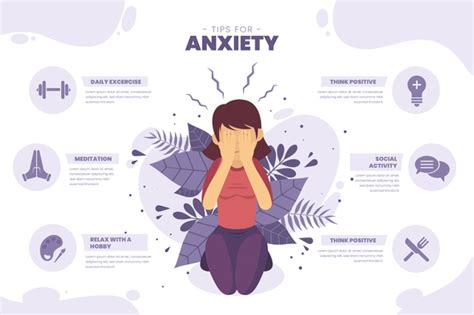
If you're experiencing any of these emotional symptoms, it's essential to seek support from a mental health professional. They can help you develop coping strategies and provide you with the tools you need to manage your anxiety.
Common Emotional Symptoms in Specific Anxiety Disorders
Different anxiety disorders can manifest with unique emotional symptoms. For example:
- Generalized anxiety disorder: excessive worry or fear that is persistent and interferes with daily life
- Obsessive-compulsive disorder (OCD): intrusive thoughts or compulsions to perform specific rituals or behaviors
- Phobias: intense fear or avoidance of specific objects, situations, or activities
Step 3: Identify Behavioral Symptoms
Behavioral symptoms of anxiety can be subtle, but they can also be indicative of an underlying anxiety disorder. Some common behavioral symptoms of anxiety disorders include:
- Avoiding certain situations or activities due to fear or anxiety
- Escaping or avoiding responsibilities or tasks
- Engaging in self-destructive or addictive behaviors
- Displaying perfectionistic or controlling behavior
- Having difficulty forming or maintaining relationships
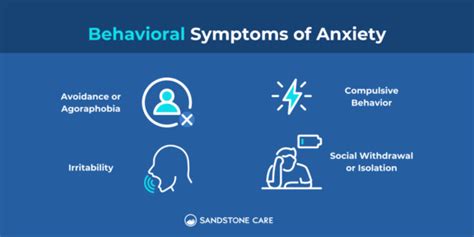
If you're experiencing any of these behavioral symptoms, it's essential to seek support from a mental health professional. They can help you identify the underlying causes of your behavior and develop strategies to manage your anxiety.
Common Behavioral Symptoms in Specific Anxiety Disorders
Different anxiety disorders can manifest with unique behavioral symptoms. For example:
- Social anxiety disorder: avoiding social situations or events due to fear of judgment or rejection
- PTSD: avoiding situations or activities that remind them of the traumatic event
- Agoraphobia: avoiding crowded or public places due to fear of panic or anxiety
Step 4: Consider Your Triggers
Triggers can be specific situations, objects, or activities that trigger anxiety symptoms. Identifying your triggers can help you develop strategies to manage your anxiety and avoid situations that exacerbate your symptoms. Some common triggers include:
- Work or school-related stress
- Financial problems or debt
- Relationship issues or conflict
- Health concerns or chronic illness
- Traumatic events or past experiences
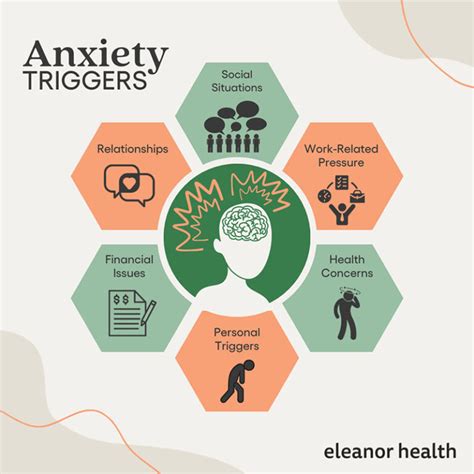
If you're experiencing anxiety symptoms, it's essential to consider your triggers and develop strategies to manage them. This can include avoiding certain situations, practicing relaxation techniques, or seeking support from a mental health professional.
Step 5: Seek Support
Seeking support is an essential step in managing anxiety symptoms. This can include seeking support from a mental health professional, joining a support group, or practicing self-care activities. Some common self-care activities include:
- Exercise or physical activity
- Mindfulness or meditation practices
- Journaling or writing
- Creative activities or hobbies
- Spending time in nature or outdoors
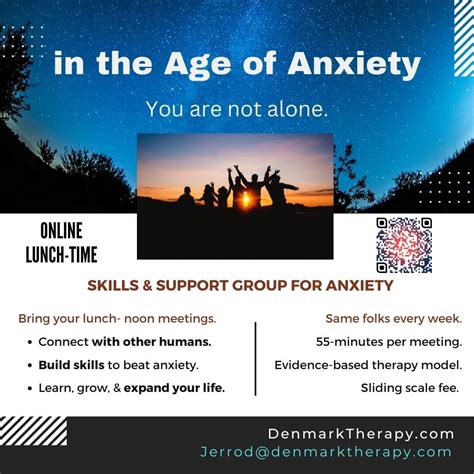
If you're experiencing anxiety symptoms, it's essential to seek support from a mental health professional. They can help you develop coping strategies and provide you with the tools you need to manage your anxiety.
What are the most common anxiety disorders?
+The most common anxiety disorders include generalized anxiety disorder, panic disorder, social anxiety disorder, phobias, and obsessive-compulsive disorder (OCD).
What are the symptoms of anxiety disorders?
+Common symptoms of anxiety disorders include excessive worry or fear, restlessness, irritability, difficulty concentrating, and physical symptoms such as rapid heartbeat or trembling.
How can I manage my anxiety symptoms?
+Managing anxiety symptoms can include seeking support from a mental health professional, practicing relaxation techniques, avoiding triggers, and engaging in self-care activities.
If you're experiencing anxiety symptoms, it's essential to take the first step towards recovery by seeking support from a mental health professional. By identifying your symptoms, triggers, and coping strategies, you can develop a personalized plan to manage your anxiety and regain control over your life.
